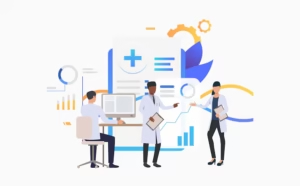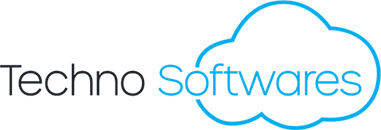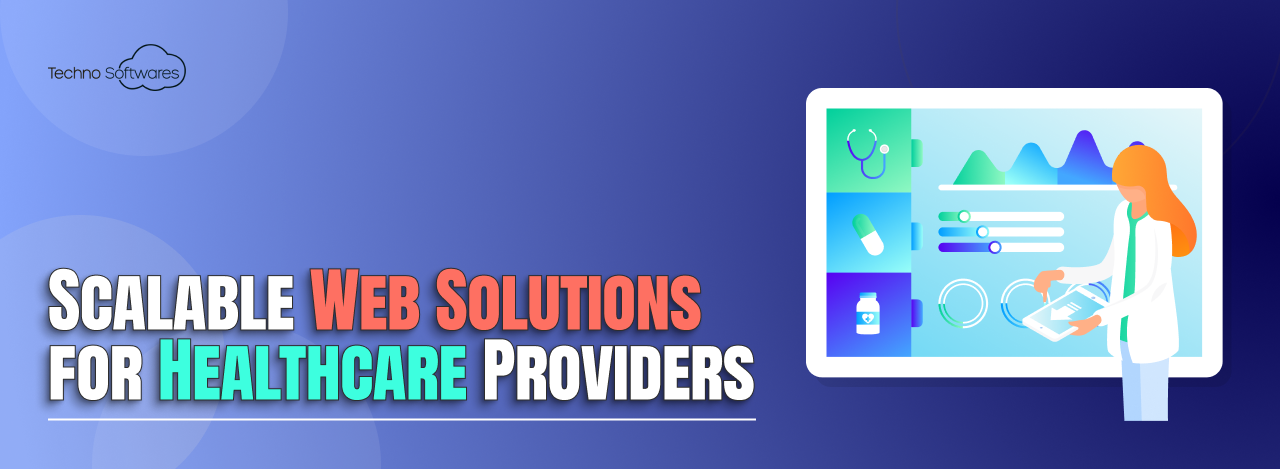Building Scalable Web Platforms for Healthcare Providers
In the ever-evolving landscape of healthcare, we find ourselves navigating a complex web of requirements that are unique to providers in this sector. Healthcare providers, whether they are hospitals, clinics, or private practices, face a myriad of challenges that necessitate a tailored approach to technology and service delivery. One of the most pressing needs is the ability to manage vast amounts of sensitive patient data while ensuring that it remains secure and accessible.
This dual requirement for security and accessibility is paramount, as it directly impacts patient care and operational efficiency. Moreover, we must recognize that healthcare providers operate under immense pressure to deliver high-quality care while adhering to strict regulatory standards. This means that any technology solutions we consider must not only enhance operational workflows but also comply with regulations such as HIPAA in the United States.
Understanding these unique needs allows us to develop solutions that are not only effective but also aligned with the core mission of healthcare providers: to improve patient outcomes. By engaging with healthcare professionals and understanding their day-to-day challenges, we can create systems that truly support their work rather than complicate it.
Key Takeaways
- Healthcare providers have unique needs that require specialized technology solutions
- Choosing the right technology stack is crucial for scalability and meeting the demands of healthcare providers
- Secure data storage and management are essential for protecting sensitive healthcare information
- Designing for high availability and reliability is important for ensuring uninterrupted access to healthcare services
- Leveraging cloud services can provide the scalability needed to meet the growing demands of healthcare providers
Choosing the Right Technology Stack for Scalability
As we delve into the realm of technology, selecting the right technology stack becomes a critical decision for healthcare providers aiming for scalability. A well-chosen technology stack can significantly enhance the ability to adapt to changing demands, whether that involves accommodating an influx of patients or integrating new services. We must consider various components, including programming languages, frameworks, and databases, all of which play a vital role in ensuring that our systems can grow alongside the needs of healthcare providers.
In our pursuit of scalability, we should also prioritize flexibility within our technology stack. This means opting for modular solutions that allow for easy updates and integrations with emerging technologies. By doing so, we can ensure that healthcare providers are not locked into outdated systems but can instead evolve with advancements in medical technology and patient care practices.
Ultimately, our goal is to create a robust foundation that supports both current operations and future growth, enabling healthcare providers to focus on what they do best: delivering exceptional care to their patients.
Implementing Secure Data Storage and Management

Data security is a cornerstone of any technology solution in the healthcare sector, and implementing secure data storage and management practices is non-negotiable. We must recognize that healthcare data is not only sensitive but also subject to various regulations that dictate how it should be stored and accessed. Our approach should involve employing encryption techniques, both at rest and in transit, to safeguard patient information from unauthorized access.
Additionally, we should implement strict access controls to ensure that only authorized personnel can view or manipulate sensitive data. Furthermore, we need to consider the importance of regular audits and monitoring of data access patterns. By establishing a culture of accountability and transparency around data management, we can mitigate risks associated with data breaches and ensure compliance with regulatory standards.
As we design our data storage solutions, we should also explore options for backup and disaster recovery to protect against data loss due to unforeseen circumstances. In doing so, we not only enhance security but also build trust with healthcare providers who rely on us to safeguard their most valuable asset: patient information.
Designing for High Availability and Reliability
| Metrics | Value |
|---|---|
| Uptime | 99.99% |
| Mean Time Between Failures (MTBF) | 10,000 hours |
| Mean Time To Recover (MTTR) | 1 hour |
| Failure Rate | 0.01% |
In the healthcare industry, downtime is not an option. When systems fail or become unavailable, it can have dire consequences for patient care and operational efficiency. Therefore, as we design our technology solutions, we must prioritize high availability and reliability.
This involves creating systems that can withstand failures and continue to operate seamlessly, ensuring that healthcare providers have access to critical information at all times. To achieve this level of reliability, we should consider implementing redundant systems and failover mechanisms. By distributing workloads across multiple servers or data centers, we can minimize the risk of service interruptions due to hardware failures or other issues.
Additionally, regular maintenance and updates are essential to keep systems running smoothly and to address any vulnerabilities before they can be exploited. By fostering a culture of proactive management, we can ensure that our technology solutions remain dependable partners for healthcare providers in their mission to deliver quality care.
Leveraging Cloud Services for Scalability
The advent of cloud computing has revolutionized the way we approach scalability in healthcare technology. By leveraging cloud services, we can provide healthcare providers with the flexibility they need to scale their operations without the burden of managing physical infrastructure. Cloud solutions offer on-demand resources that can be adjusted based on current needs, allowing for rapid deployment of new services or expansion into new markets.
Moreover, cloud services often come with built-in security features and compliance certifications that can alleviate some of the burdens associated with managing sensitive healthcare data. As we explore cloud options, we should consider hybrid models that allow for a combination of on-premises and cloud-based solutions. This approach enables healthcare providers to maintain control over critical data while still benefiting from the scalability and flexibility offered by cloud services.
Ultimately, by embracing cloud technology, we position ourselves as enablers of growth for healthcare providers in an increasingly digital world.
Integrating with Third-Party Healthcare Systems

Integration with third-party healthcare systems is another crucial aspect of building scalable technology solutions. The healthcare ecosystem is vast and interconnected, comprising various stakeholders such as laboratories, pharmacies, insurance companies, and other service providers. To create a seamless experience for healthcare providers and their patients, we must ensure that our systems can communicate effectively with these external entities.
We should prioritize interoperability when designing our solutions, utilizing standardized protocols such as HL7 or FHIR (Fast Healthcare Interoperability Resources) to facilitate data exchange between systems. By doing so, we enable healthcare providers to access comprehensive patient information from multiple sources, enhancing their ability to make informed decisions about patient care. Additionally, integrating with third-party systems can streamline administrative processes, reduce duplication of efforts, and ultimately improve overall efficiency within healthcare organizations.
Ensuring Compliance with Healthcare Regulations
Compliance with healthcare regulations is a fundamental requirement for any technology solution in this sector. As we develop our systems, we must remain vigilant about adhering to regulations such as HIPAA in the United States or GDPR in Europe. These regulations are designed to protect patient privacy and ensure the secure handling of sensitive information.
Our commitment to compliance not only safeguards patient data but also builds trust with healthcare providers who rely on us to uphold these standards. To ensure compliance, we should implement robust policies and procedures around data handling practices. This includes conducting regular training sessions for staff on compliance requirements and best practices for data security.
Additionally, we should establish mechanisms for monitoring compliance through audits and assessments. By fostering a culture of compliance within our organization, we can demonstrate our dedication to protecting patient information while empowering healthcare providers to focus on delivering quality care without fear of regulatory repercussions.
Continuous Monitoring and Optimization for Scalability
Finally, continuous monitoring and optimization are essential components of maintaining scalability in our technology solutions. The healthcare landscape is dynamic, with evolving needs and challenges that require us to be agile in our approach. By implementing monitoring tools that provide real-time insights into system performance and user behavior, we can identify potential bottlenecks or areas for improvement before they impact operations.
Moreover, optimization should be an ongoing process rather than a one-time effort. We should regularly review system performance metrics and user feedback to identify opportunities for enhancement. This could involve refining workflows, upgrading infrastructure, or incorporating new technologies that align with emerging trends in healthcare.
By committing to continuous improvement, we position ourselves as proactive partners for healthcare providers, ensuring that our solutions remain effective and relevant in an ever-changing environment. In conclusion, as we navigate the complexities of providing scalable technology solutions for healthcare providers, it is imperative that we understand their unique needs and challenges. By choosing the right technology stack, implementing secure data management practices, designing for reliability, leveraging cloud services, integrating with third-party systems, ensuring compliance with regulations, and committing to continuous monitoring and optimization, we can create a robust framework that supports the mission of healthcare providers: delivering exceptional care to patients while navigating an increasingly complex landscape.
For healthcare providers looking to enhance their web platforms, understanding the integration of various technologies is crucial. A related article that might interest you is “Maximizing Efficiency: Rubicon Integration in WordPress” by Techno Softwares. This article explores how integrating Rubicon with WordPress can streamline operations and improve efficiency, which is essential for healthcare platforms requiring robust, scalable solutions. You can read more about this integration and its benefits for your web platform by visiting Maximizing Efficiency: Rubicon Integration in WordPress. This insight could be particularly valuable when considering the scalability and functionality of healthcare web platforms.
FAQs
What is Techno Softwares’ approach to building scalable web platforms for healthcare providers?
Techno Softwares focuses on understanding the specific needs and requirements of healthcare providers to develop custom web platforms that are scalable, secure, and user-friendly.
What technologies does Techno Softwares use to build scalable web platforms for healthcare providers?
Techno Softwares utilizes a combination of technologies such as cloud computing, microservices architecture, and robust databases to ensure scalability and performance of web platforms for healthcare providers.
How does Techno Softwares ensure security and compliance in the web platforms built for healthcare providers?
Techno Softwares follows industry best practices and compliance standards such as HIPAA to ensure the security and privacy of patient data in the web platforms built for healthcare providers.
What are the key features of the web platforms developed by Techno Softwares for healthcare providers?
The web platforms developed by Techno Softwares for healthcare providers include features such as patient portals, electronic health records (EHR) integration, appointment scheduling, telemedicine capabilities, and secure messaging.
How does Techno Softwares ensure the scalability of the web platforms for healthcare providers as their needs evolve?
Techno Softwares designs the web platforms with scalability in mind, using flexible architecture and technologies that can easily accommodate the growing needs of healthcare providers as their patient base and services expand.





